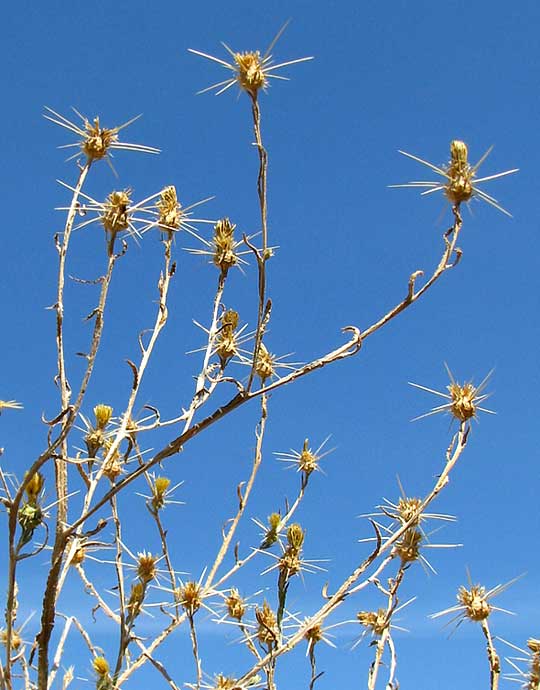
Excerpts from Jim Conrad's
Naturalist Newsletter
from the September 18, 2005 Newsletter issued from the Sierra Nevada foothills
somewhat east of Placerville, California, USA
YELLOW STARTHISTLES GALORE
If you want to see Fred zip his wheelchair across the garden all you need to do is to point out a Yellow Starthistle, CENTAUREA SOLSTITIALIS, and he'll rush at it to pull it out. Fred is a very mild-mannered, non-violent guy, but Yellow Starthistles just get his goat. If you ever grab one accidentally while pulling weeds, step on one barefooted, or even run your bicycle tire over one, you'll understand why. You can see what they look like below:

You might guess that starthistles are invasives. Their homeland is thought to be the Mediterranean region, and that might explain why they love this area's Mediterranean climate. The road I take upslope in one place crosses a meadow and next to the road Yellow Starthistles form a pure stand perhaps a quarter of an acre large. They're also pretty thick around the house of my friend Buck. I've sometimes wondered why he let them grow there because there's not a lazy bone in that man's body. After looking at starthistles awhile during my hike upslope this week maybe I found the reason: Honeybees just love starthistles, and Buck just loves his hives and honey.
As if the awful spines on this plant's flowering heads weren't enough, the plant's herbage is poisonous, at least to horses. It gives horses "chewing disease," the first signs of which are an inability to eat and drink because the face's muscles, lips and tongue become so stiff they can't be managed. The brain is damaged and the horse finally dies of thirst and starvation.
One good thing, though, is that, like so many weeds, starthistles seem to need humanity's disruptions to survive. It was striking that 30 feet from the road starthistles gave way to other plants and disappeared entirely. Only along the occasionally mowed, herbicide- sprayed road were they able to take over.